Affinity segments are a segmentation strategy that allows businesses to target their customers with precision. By grouping audiences based on their interests, behaviors, and lifestyles, affinity segments help marketers reach people more likely to engage with their content or products.
Take J.C. Penney, for example. The American retailer used customer data to group audiences based on demographics and preferences and launched targeted advertisement campaigns. However, instead of driving engagement, customers felt disconnected from the brand, leading to declining sales.
The issue? Demographic segmentation often creates overly broad customer groups that fail to resonate with individuals’ core needs, desires, and lifestyle choices.
To truly connect with your audience, you must go beyond basic demographics. That’s where affinity segments come in. By focusing on shared interests, values, and emotional connections, brands can foster more meaningful and personalized interactions.
In this guide, we’ll explore the power of affinity segments, explaining how they work and how you can use them to elevate your segmentation strategy.
Traditional segmentation vs. affinity segments
Affinity segments are customer groups categorized based on shared interests, behaviors, lifestyles, or values that align with your brand. Unlike traditional demographic segmentation, which might focus on basic criteria like age or gender, affinity segmentation dives deeper into what drives a customer’s preferences and purchasing decisions.
North Face, for example, has different lifestyle segments like, “explorer”, “traveler”, “hiker”, “extreme athlete” etc., with relevant products that they push to each segment. A customer identified as a passionate climber might receive product recommendations for climbing gear and accessories, while a casual hiker might see recommendations for lighter, more versatile outdoor apparel.

Affinity segments help businesses move beyond generic personalization and create more meaningful interactions with their target audience. This table compares affinity segments with traditional segmentation strategies.
| Aspect | Traditional Segmentation | Affinity Segments |
| Focus | Broad demographic factors | Shared interests, behaviors, values, and lifestyles |
| Approach | General grouping based on age, gender, income, etc. | Detailed grouping based on deeper customer insights |
| Segmentation Criteria | Age, gender, income, geographic location | Activities, passions, preferences, and lifestyle choices |
| Example | Age groups such as “18-24” or “25-34” | Segments like “avid runners,” “yoga enthusiasts,” or “outdoor adventurers” |
Brands that use affinity segmentation to engage with customers see positive results in customer engagement, conversion rates, and overall satisfaction. Read this blog post to discover the latest email marketing trends that boost customer retention.
How Amazon leverages affinity segments to drive engagement
Amazon serves a vast and diverse customer base, segmenting its audience into various categories such as “Resigned,” “Struggler,” “Aspirer,” “Succeeder,” and “Reformer.” This segmentation allows Amazon to tailor their marketing strategies to meet the specific needs and preferences of different customer groups.
Let’s explore how Amazon uses affinity segments and some examples of its marketing strategies:
Product Recommendations
Amazon’s recommendation engine plays a crucial role in leveraging affinity segments. By analyzing a customer’s past purchases and browsing history, Amazon can suggest products that closely align with their interests.
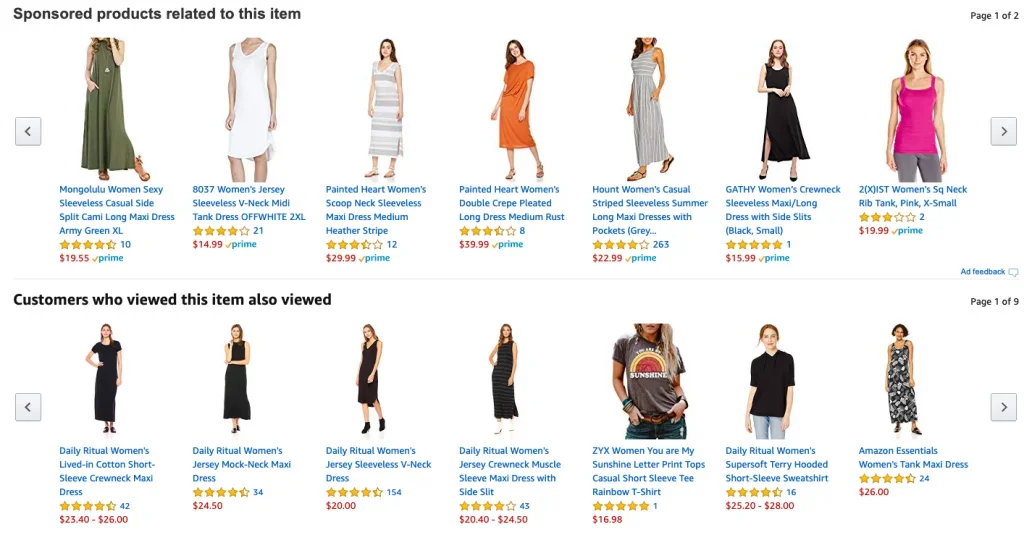
For instance, if a customer frequently browses or buys apparel, Amazon will recommend related products such as dresses, accessories, or new fashion arrivals. This approach ensures that recommendations are highly relevant, increasing the likelihood of engagement and purchase.
Targeted Email Campaigns
Amazon enhances customer engagement through targeted email campaigns. Personalized emails include tailored product recommendations, special offers, and updates on new arrivals that match the customer’s interests.
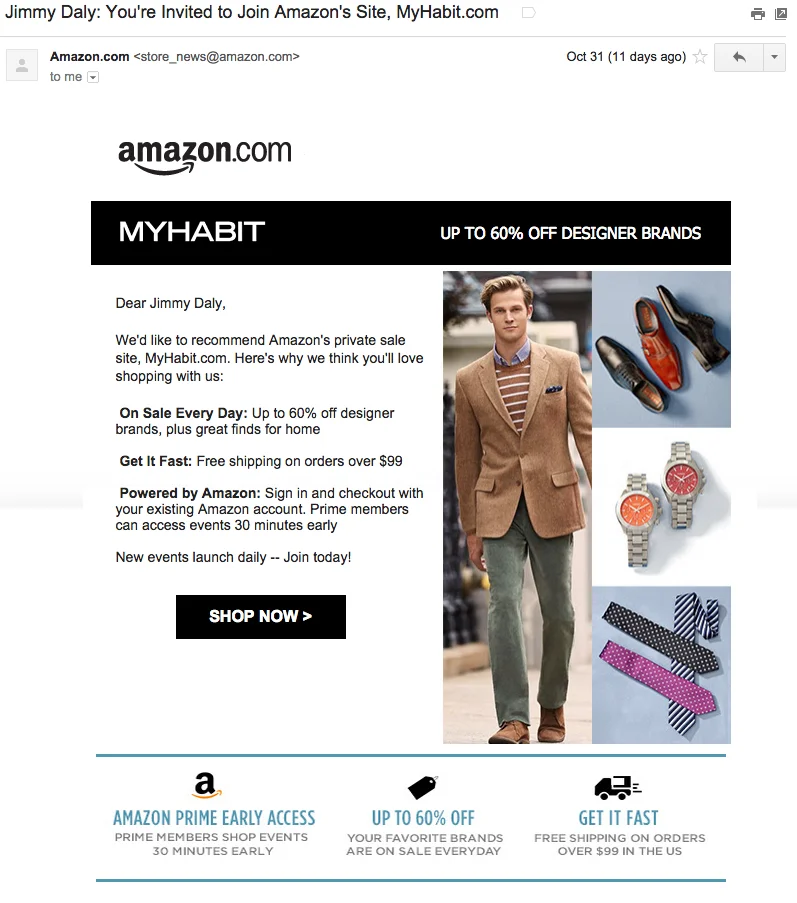
For example, if a customer has shown interest in designer brands, they might receive emails featuring discounts.
Personalized Homepage
The homepage experience on Amazon is highly personalized based on individual customer preferences. Amazon’s personalized product recommendation widgets showcase products and deals most relevant to each user.
This targeted approach helps customers find products they are likely to purchase, enhancing their overall engagement with the platform.
Sponsored Ads
Amazon effectively uses affinity segments to display targeted ads both on and off its platform. These sponsored ads are tailored to users based on their interests and past behaviors.
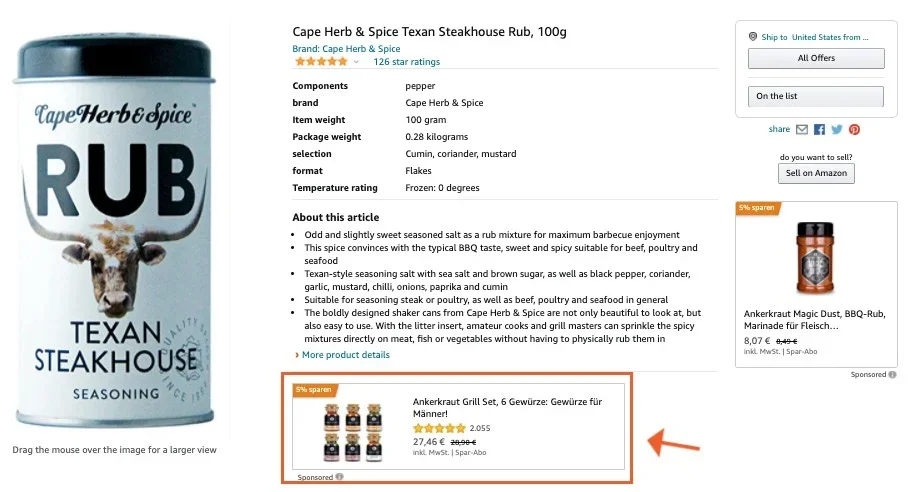
Amazon even recommends a competitor’s related products while a customer is on a brand’s product page to increase the likelihood of purchase.
How Amazon’s personalization varies across customer segments
Amazon tailors its messaging for the same product differently across various affinity segments. This approach ensures that each segment receives a message that resonates with their unique interests and needs.
Amazon Prime
Amazon Prime is marketed to different segments with tailored messaging. While families might receive promotions highlighting Prime Video’s kid-friendly content, fitness enthusiasts can see ads emphasizing the convenience of Prime’s fast delivery for sports equipment.
Amazon Fresh
Amazon Fresh targets customers who are interested in grocery shopping and healthy eating. Marketing campaigns for Amazon Fresh often feature fresh produce, organic products, and meal kits, appealing to health-conscious consumers.
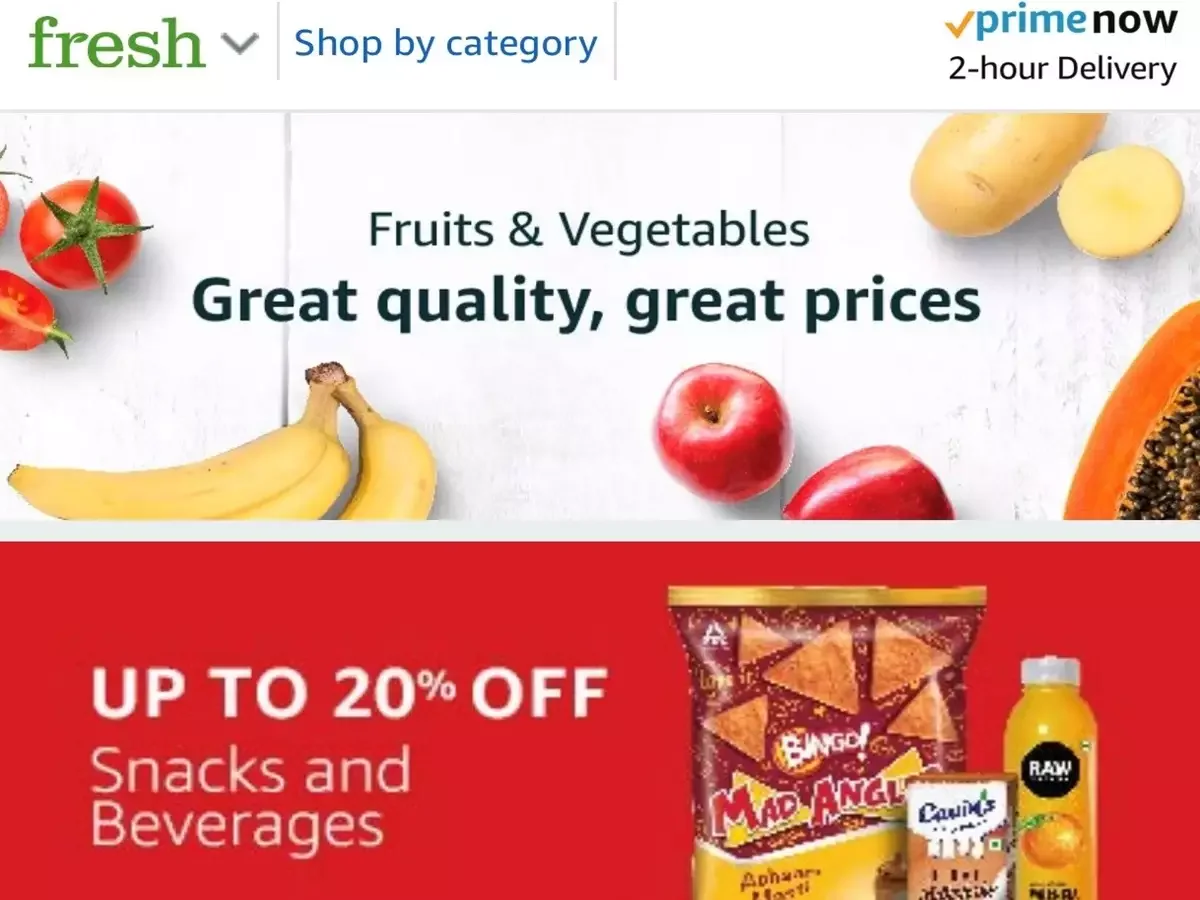
Kindle and Audible
Amazon markets its Kindle and Audible services for reading enthusiasts. Campaigns include personalized recommendations for books and audiobooks based on the customer’s reading and listening history.
Amazon Fashion
Amazon Fashion uses segmentation to promote clothing and accessories. Customers interested in fashion receive recommendations and ads for the latest trends, seasonal collections, and exclusive deals on popular brands.
Amazon is a global behemoth that has created a highly successful segmentation strategy. Their extensive data allows them to fine-tune their marketing efforts with unparalleled precision, driving significant engagement and sales. But you don’t need to be a giant to devise a successful segmentation strategy!
Effective segmentation isn’t just for behemoths!
While the scale and resources of enterprise-level companies’ give them a distinct advantage, the principles of effective segmentation can be applied by businesses of all sizes to enhance their marketing strategies and achieve notable results.
Birchbox is a subscription box service for beauty and grooming products. It has transformed the beauty industry with its personalization approach.
By using detailed customer profiles and preferences, Birchbox has been able to segment its customer base into distinct groups based on beauty concerns, product preferences, and lifestyle needs.
Following are some ways Birchbox makes use of its affinity-based segments.
Personalized Box Content
Birchbox curated product samples tailored to individual preferences and beauty profiles, ensuring that each box was uniquely suited to the customer’s needs. The boxes are customized for different customer segments by adjusting the selection based on specific preferences and needs.
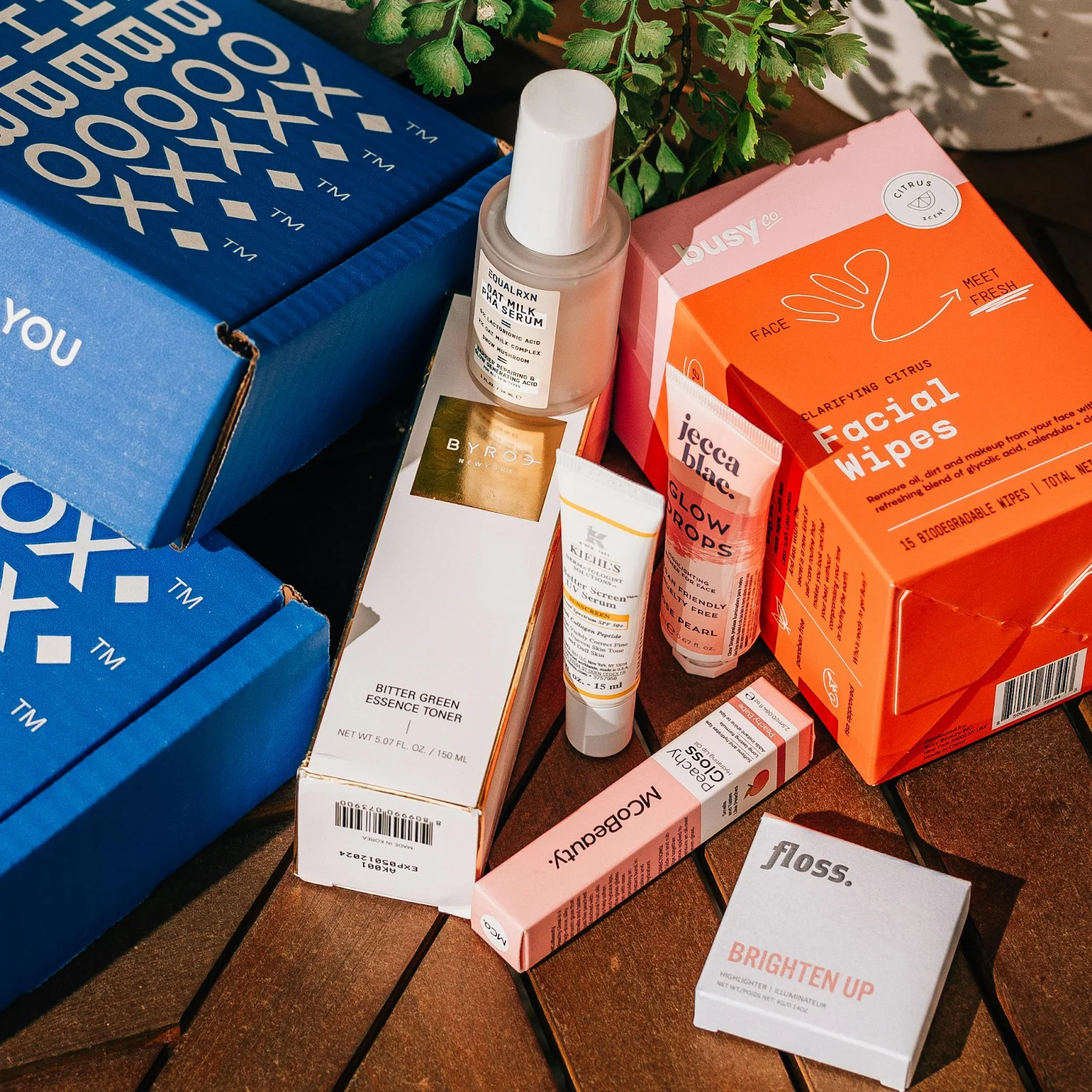
Source: Birchbox
For example, a box for skincare enthusiasts might include high-end serums and moisturizers, while one for makeup lovers could feature trendy cosmetic samples.
Targeted Marketing Campaigns
Birchbox’s targeted email campaigns are tailored to different customer segments by offering personalized product recommendations and special offers based on individual beauty profiles.

Emails for skincare enthusiasts might highlight new skincare products and tips, while those for makeup lovers feature the latest makeup trends and exclusive discounts. This segmentation ensures that each email resonates with the recipient’s specific interests and needs.
Ready to create affinity segments?
Now that you’ve seen the benefits and examples of brands leveraging affinity segments, it’s time to put these insights into action. Creating effective affinity segments can transform your marketing strategy, making your campaigns more relevant and engaging.
In the following section, we’ll guide you through the steps to develop and implement your own affinity segments, ensuring you can harness the power of personalized marketing to drive success.
Start by contextualizing customer data
Customer data helps identify meaningful patterns and insights, which are crucial for creating well-defined affinity segments that resonate with your customers. Companies that use customer data for segmentation achieve up to a 15% increase in revenue.
Brands usually have access to the following data:
- Demographic Data: Age, gender, income, and education level
- Geographic Data: Location
- Behavioral Data: Purchase history
This will provide a starting point for creating basic customer segments. To add more context to your customer segments, here are some additional data points that you need to capture.
Detailed Behavioral Insights
- Advanced Purchase Patterns: Data on types of products, purchasing frequency, buying triggers, and cross-category interests.
- Interaction Data: Insights from interactions across different channels (social media, email, website) to understand engagement beyond basic metrics.
Interest and Lifestyle Data
- Interests: Details about areas of interest and lifestyle preferences
- Lifestyle Choices: Data on travel habits, dietary preferences, fitness routines, and other lifestyle choices.
Psychographic Details
- Values and Motivations: Understanding customer values, motivations, and attitudes towards products or services.
- Personality Traits: Insight on personality traits and emotional drivers can help in creating more refined and relatable segments.
Contextual and Situational Data
- Seasonal Trends: Data on how preferences and behaviors change with seasons or specific events, allowing for context-based segmentation.
- Geo-Contextual Data: Detailed insights about local events, cultural influences, or regional trends.
By gathering and analyzing these types of data, you can create well-defined affinity segments that reflect deeper customer insights, leading to more targeted personalization strategies.
A customer engagement platform automates segmentation at scale
Manual segmentation is a daunting task due to the vast amount of data spread across sources like websites and apps, CRM tools, social media analytics, customer surveys, and review platforms.
Each piece of data must be meticulously gathered, organized, and analyzed to uncover meaningful patterns. The sheer volume of data can quickly become overwhelming, leading to delayed insights and missed opportunities.
Martech tools can improve marketing efficiency by 30% by automating segmentation.
Invest in an AI-powered customer engagement platform that streamlines the complex process of segment creation using data from diverse sources. All you need to do is integrate your data sources with the platform and set up segmentation criteria!
Find out more in this blog about how Netcore’s co-marketer can create profitable and accurate audience segments 20x faster with simple natural language prompts.
Netcore’s Affinity-based segmentation
Netcore helps you create highly targeted and effective marketing campaigns by automating segment creation. The system analyzes customer data to identify key traits, like product preferences or shopping frequency, and segments customers accordingly.
Now you can create personalized campaigns, target customers efficiently, improve customer loyalty, and make better decisions using data insights. Here is how Air India Express generated 70X ROI with Netcore’s Customer Engagement and Experience Platform.
Picture this: For an upcoming clearance sale, targeting discount lovers with exclusive codes, engaging sports gear fans with early access to a new line, and rewarding top spenders with VIP perks.
It’s time to increase your marketing ROI with affinity segments
Affinity segments can drive engagement and boost ROI for your campaigns. By focusing on shared interests, behaviors, and values, you can create campaigns that resonate deeply with your audience, just like Amazon and Birchbox have done.
With detailed customer insights, you can make smarter decisions about product development and marketing strategies, giving you a significant competitive edge. Advanced segmentation facilitates more meaningful interactions with your audience, resulting in increased satisfaction and loyalty.
If you’re ready to take your marketing to the next level, Netcore’s AI-powered customer engagement platform can help. It simplifies the segmentation process, making it easier to personalize your campaigns and achieve impressive results. Book a demo today and discover how precise, data-driven segmentation can transform your marketing efforts and drive significant results.








